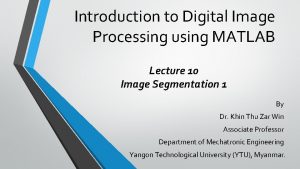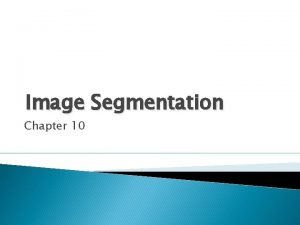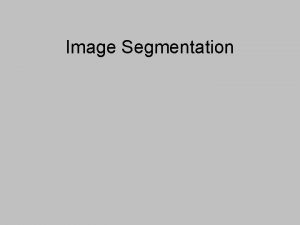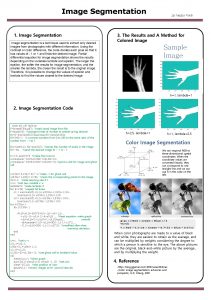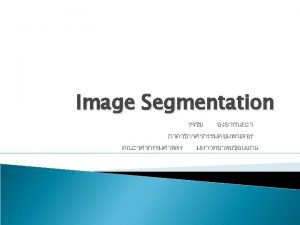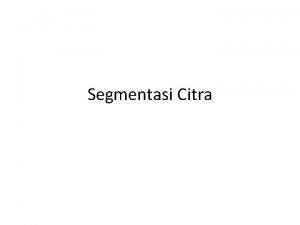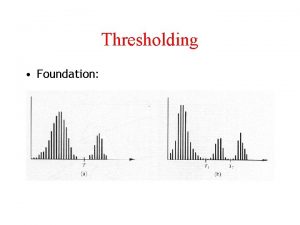Image Segmentation Nitin Rane Image Segmentation Introduction Thresholding








- Slides: 8

Image Segmentation Nitin Rane

Image Segmentation • • • Introduction Thresholding Region Splitting Region Labeling Statistical Region Description Application Areas

Introduction • Image segmentation is a topic of IP. Then Why in AI? • What is Image Segmentation? – Separating images from background and each other. – Images are partitioned with respect to a chosen property such as brightness, color, reflectivity, texture etc. – Involves partitioning of images into connected regions, each region being homogeneous in some sense.

Thresholding • To segment a Gray Scale Image into a binary Black and White Image. • Thresholding Algorithm Search all the pixels f(i, j) of the image f. An image element g(i, j) of the segmented image is an object pixel if f(i, j) >= T, and is a background pixel otherwise. If there are multiple objects in the image, multiple thresholds can be used.

Region Splitting • Break the image into a set of disjoint regions which are coherent within themselves. • Merging process is used after each split. • Process continues until no further splitting occurs. • This a divide and conquer or top down method.

Region Labelling • Assigns each connected foreground region a unique label, thus separating different objects. • Region Growing – technique forming a labeled image from a binary image. 1. Start by choosing an arbitrary seed pixel and compare it with neighboring pixels. 2. Region is grown from the seed pixel by adding in neighboring pixels that are similar, increasing the size of the region. 3. When the growth of one region stops we simply choose another seed pixel which does not yet belong to any region and start again.

Statistical Region Description • Works directly with regions of pixels in the image, and to describe them by various statistical measures. • Statistical descriptions may be divided into two distinct classes. Examples of each class are given below: - Geometric descriptions: area, length, perimeter, elongation, compactness, moments of inertia. - Topological descriptions: connectivity and Euler number.

Application Areas • • • Pattern Recognition Image Encryption Image Processing Medical and Biomedical imaging Computer Graphics Computer Vision


